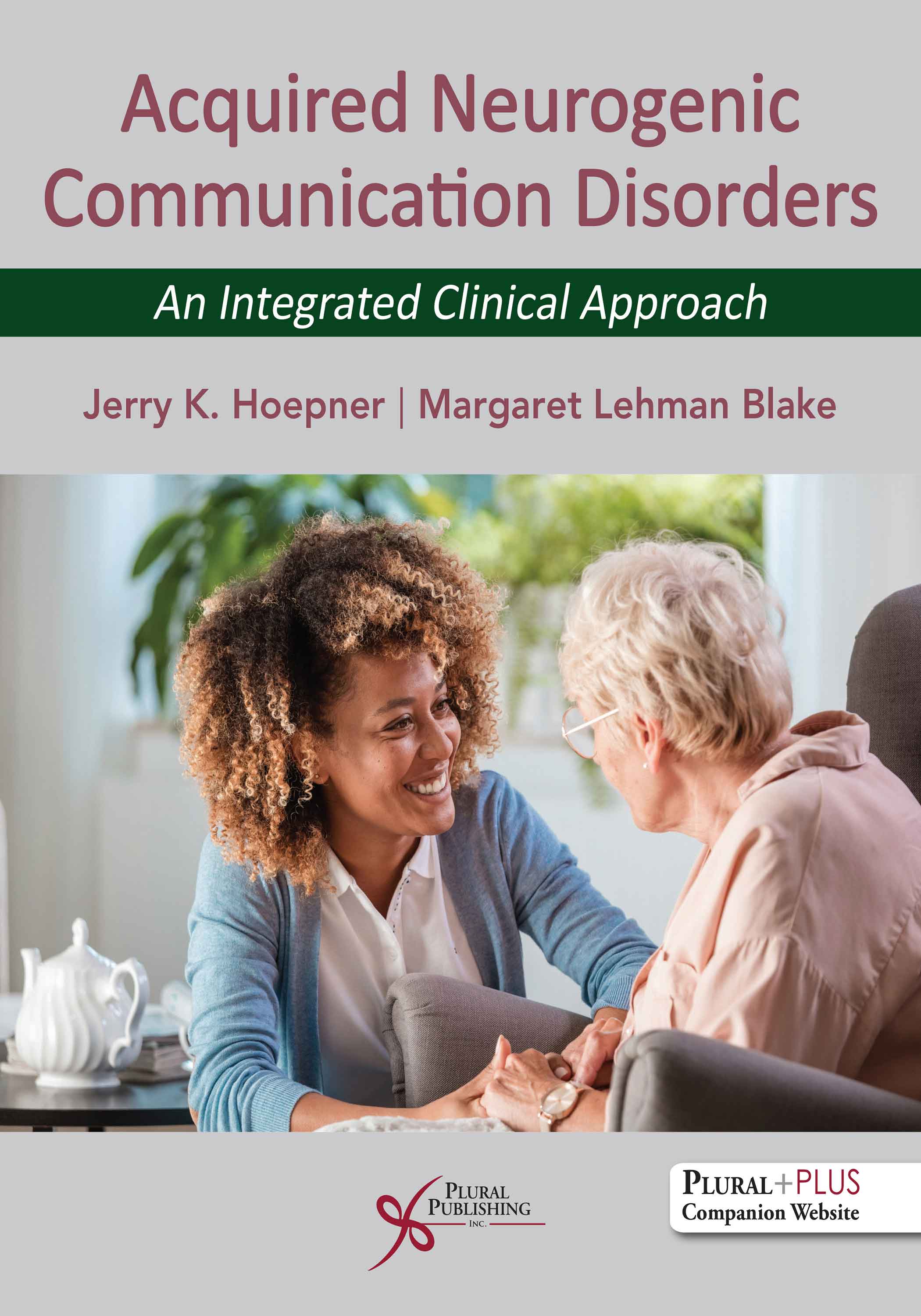
Acquired Neurogenic Communication Disorders: An Integrated Clinical Approach
First Edition
Jerry K. Hoepner, Margaret Lehman Blake
Details: 362 pages, Full Color, Softcover, 8.5" x 11"
ISBN13: 978-1-63550-425-5
© 2025 | Available
For Instructors
Purchase
Acquired Neurogenic Communication Disorders: An Integrated Clinical Approach provides an overview of acquired neurogenic communication and swallowing disorders for undergraduate courses in communication sciences and disorders programs. Compared to other books on this subject, this text is organized by anatomical systems and locations, not by disorder. The authors aim to teach students about the cognitive, speech, language, and swallowing disorders that occur with damage to neurological systems in a manner that breaks down silos that artificially separate disorders that routinely co-occur. This approach reflects the reality that most individuals with acquired brain injuries have multiple cognitive, communication, and swallowing disorders.
This clinical, systems-based approach will better foster understanding of the effects of acquired damage and degeneration to neurological systems/networks. It includes cases to highlight the incidence and co-occurrence of speech, voice, language, cognitive, and swallowing impairments in real clients who experience these forms of damage. Cases are also representative of a broad range of racial and cultural characteristics, which highlight both similarities (i.e., that anatomy and physiology are the same, regardless of race) and unique differences among people. Most chapters include clinical cases which integrate commonly co-occurring impairments. The intent is to help readers recognize that disorders like aphasia, dysarthria, dysphagia, and cognitive-communication disorders don’t usually occur in isolation but rather together. Many cases include questions to provoke thinking about the overlap between speech, language, cognition, and swallowing.
Key Features
- Videos of individuals with various acquired neurogenic disorders completing various speech, language, cognitive, and swallowing tasks. Partners of individuals with PPA were also interviewed.
- Clinical cases based on real clients, embedded into chapters to illustrate specific characteristics of disorders.
- Full-color layout and illustrations help students make connections between functions, anatomy, and clinical impairments.
- Assessment and Intervention tables summarize common assessments and interventions for speech, language, cognition, and swallowing.
- Concept tables include information about subtypes of disorders, components of complex functions, and frameworks.
- Boxes with activities and additional information to link the content to everyday experiences for generalization of learning.
- Additional pedagogical aids include: chapter outlines, bolded key terms (as well as Latin and Greek origins and meaning), concise chapter summaries, key concepts lists, and numerous references.
PluralPlus Online Ancillaries
For instructors: PowerPoint Slides, Test Bank, Videos, Activities/exercises, Case Studies
For students: Videos, eFlashcards, Activities/exercises
Reviews
“The book is a fantastic addition to the literature in the field of communication sciences and disorders. The clinical direction of this book and its sensitivity to issues of Health-Related Quality of Life make it unique. Hoepner and Blake provide a multitude of case examples that bring the content to life, which is an important element for teaching neurology and acquired disorders to undergraduate students. I appreciated the authors’ decision to discuss left hemisphere disorders and right hemisphere disorders separately as this is quite clinically relevant.”
—Kelly Rutherford EdD, CCC-SLP, Associate Professor, Marshall University
“This book has many strengths. It provides clear definition of the terminology in this field that some students used to struggle with; it provides with up-to-date information such as health definition by WHO (2022) and Cookie Theft picture (2018); the book is at introductory level in neurogenic communication disorders with appropriate information on different neurogenic conditions following by the major current assessments and interventions; it provides appropriate cases as examples illustrating the signs and symptoms, and rationale of the treatment; Another feature of this book is its easy-to-understand language, which is vital for undergraduate students to understand the complex neurogenic communication disorders.”
-Qiang Li, PhD, Assistant Professor, Fort Hays State University
“The book is well organized. The case studies are well done and connect each chapter in a meaningful way to clinical cases. This builds analytical reasoning even for less common diagnoses. The authors do a good job of providing complex content in a way that is understandable (e.g., motor pathways). …Students will benefit from the review of normal anatomy and physiology prior to learning about different disorder types.”
—Karin Thomas, SLP.D, CCC-SLP, Assistant Professor, Saint Mary’s College
“I think the book is well organized. The information and materials covered is very complete. I think that the book includes good images, figures, and tables throughout that will help students understand the material.”
—Miriam Carroll-Alfano, PhD, CCC-SLP, Associate Professor, Midwestern University
“I like the clinical focus of a multisystems approach to teaching neurogenic disorders. The use of tables and pictures helped to solidify topics addressed. The use of a summary and key concepts at the end of each chapter was of particular importance for the undergrad students who may be getting this level of information for the first time.”
—Cindy Sendor, MA, CCC-SLP, Assistant Professor, California Baptist University
“This text goes above and beyond in providing appropriate depth and breadth to newer, evidence-based concepts that are important for acquired disorders as well as speech-language pathology as a discipline. …I also appreciate the use of case studies to help demonstrate the concepts presented in many chapters, and discussion of DEI as well as newer evidence-based frameworks including perspectives on disability.”
—Zeth Everick Collom, MS, CCC-SLP, Instructor, West Texas A&M University
“This book was very well done – I liked the organization of brain regions in this book. It makes it different from other textbooks and helps to better understand the brain and the brain’s role in various disorders. …I really appreciated the way the information was presented (by brain location rather than disorders). The information was written in a way that made it enjoyable and easier to read. The stories and relevant connections to students will be helpful to maintain attention and comprehension of the information. I really liked the figures, tables, and case studies that made all the information even more understandable. Diversity, inclusion, and equity were also a theme throughout the book and not isolated to a section of a chapter.”
—Joy McKenzie, EdD, MS, CCC-SLP, Associate Professor, St. Cloud State University
“This book’s strength lies in the methodical sequencing of the concepts presented from the detailed information on the anatomical concepts and associated images to the detailed dissection of the areas of the brain and the related neuroanatomical basis of rehabilitation. The authors successfully provided an overview of neuroanatomy and neurophysiology and provided in great detail description of the various types of speech, language, swallowing, and cognitive aspects of acquired neurogenic communication disorders in language easily understood by those who are unfamiliar with this medically-based information. The authors made the topic area interesting as well as educational.”
—Carlotta Kimble, PhD, CCC-SLP, Professor, University of Central Missouri
Preface
Acknowledgements
Reviewers
Chapter 1. Systems-Based Clinical Approach
Breaking Down the Silos
Models of Communication Systems
What Is the Value in Models?
Speech: DIVA (Directions Into Velocities of Articulators)
Motor Speech
Language: Dual Stream Models
Cognition: ACT-R (Adaptive Control of Thought-Rational)
Swallowing: IFSiP (Integrated Framework for Swallowing Processes)
Putting It All Together
Summary
Key Concepts
References
Chapter 2. Overview of Neuroanatomy and Neurophysiology
Overview
Structures and Regions
Frontal Lobes
Parietal Lobes
Temporal Lobes
Occipital Lobes
Insula
Subcortical Regions and Structures
Subcortical White Matter
Subcortical Structures
Brainstem
Cranial Nerves
Cerebellum
Meninges and Ventricles
Blood Supply to the Brain
Neurophysiology
Typical Aging
Summary
Key Concepts
References
Chapter 3. Etiologies and Pathophysiology
Etiologies
Stroke
Anoxia and Hypoxia
Tumors
Traumatic Brain Injury
Degenerative Diseases
Dementias
Parkinson’s Disease
Huntington’s Disease
Multiple Sclerosis
Amyotrophic Lateral Sclerosis
Infectious Diseases
Prevalence Patterns
Brain Imaging
Anatomical/Structural Imaging
Functional Imaging
Concepts for Understanding Effects of Brain Injury
Summary
Key Concepts
References
Resources
Chapter 4. Communication, Cognition, and Swallowing
Definitions and Disorders
Speech
Disorders of the Motor System
Motor Speech Disorders
Language
Disorders of Language
Is it Speech? Or Language? Or Both?
Cognition
Attention
Attention of Networks
Disorders of Attention
Memory
Disorders of Memory
Executive Functions
Disorders of Executive Function
Awareness
Disorders of Awareness
Social Cognition
Disorders of Social Cognition
Is it Language? Or Cognition? Or Both?
Swallowing
Disorders of Swallowing
Summary
Key Concepts
References
Chapter 5. Foundational Knowledge for Neurorehabilitation
Neural Plasticity
Historical Context
Framing Assessment and Intervention in Neurorehabilitation
Rehabilitation Treatment Specification System (RTSS)
Health Equity, Social Determinant of Health, Cultural/Ethnic Issues
Keeping Up With Terminology
Social Determinants of Health
Access to Care and Healthy Living
Education and Socialization
The Coin Model
Summary
Key Concepts
References
Resources
Chapter 6. Pre-Frontal Lobes
Diseases and Disorders of the Frontal Lobes
Traumatic Brain Injury
Frontotemporal Dementia
Assessment
Frontal Damage Treatment
Speech Disorders
Language Disorders
Discourse
Cognitive Disorders
Attention
Impairments to Attention
Memory
Executive Functions
Awareness
Swallowing Disorders
Summary
Key Concepts
References
Chapter 7. Left Hemisphere Perisylvian Region
Diseases and Disorders of the Left Hemisphere
Speech Disorders
Dysarthria
Apraxia of Speech (AOS)
Assessment
Treatment
Primary Progressive Apraxia of Speech (PPAOS)
Language Disorders
Aphasia
Global Aphasia
Mixed Transcortical Aphasia
Non-Fluent Aphasia
Transcortical Motor Aphasia
Fluent Aphasia
Transcortical Sensory Aphasia
Conduction Aphasia
Anomia
Disorders of Reading and Writing
Alexia and Agraphia
Gerstmann Syndrome
Surface Dyslexia/Dysgraphia
Degenerative and Progressive Aphasias
Primary Progressive Aphasia (PPA)
Assessment
PPA Specific Assessments (PPA)
Intervention
Cognitive Disorders
Attention
Memory
Executive Functions
Anosognosia
Non-Linguistic Cognitive Impairments in Post-Stroke Aphasia
Degenerative and Progressive Cognitive Disorders
Swallowing Disorders
Motor/Weakness Related
Sensory Related
Cognition/Attention Related
Summary
Key Concepts
References
Chapter 8. Right Hemisphere Perisylvian Region
Diseases and Disorders of the Right Hemisphere
Speech Disorders
Language Disorders: Apragmatism
Linguistic Aspects: Production
Linguistic Aspects: Comprehension
Paralinguistic Aspects: Aprosodia
Extralinguistic Aspects
Assessment of Apragmatism
Treatment of Apragmatism
Linguistic and Extralinguistic Apragmatism
Paralinguistic Apragmatism: Aprosodia
Discourse and pragmatics
Cognitive Disorders
Attention
Unilateral Neglect
Assessment of Unilateral Neglect
Treatment of Unilateral Neglect
Memory
Executive Function
Anosognosia
Social Cognition
Swallowing Disorders
Motor/Weakness Related
Sensory Related
Cognition/Attention Related
Summary
Key Concepts
References
Chapter 9. Cortical Posterior Regions
Diseases and Disorders of the Posterior Hemispheres
Visual Pathways
Visual Field Cuts
Visual Processing Disorders
Assessment and Treatment of Visual Disorders
Speech Disorders
Language Disorders
Cognitive Disorders
Visuoperception
Visuocontruction
Spatial Cognition
Assessment and Treatment of Cognitive Disorders
Posterior Damage Syndromes
Swallowing Disorders
Summary
Key Concepts
References
Chapter 10. Subcortical Structures
Basal Ganglia
Disorders and Diseases of the Basal Ganglia
Parkinson’s Disease
Huntington’s Disease
Corticobasal Syndrome
Speech Disorders
Language Disorders
Cognitive Disorders
Executive Function and Awareness
Memory and Attention
Social Cognition
Swallowing Disorders
Thalamus
Functions of the Thalamus
Sensorimotor Functions
Cognition and Emotion
Cortical Arousal
Disorders and Diseases of the Thalamus
Speech Disorders
Language Disorders
Cognitive Disorders
Swallowing Disorders
Summary
Key Concepts
References
Other Resources
Chapter 11. Brainstem, Cranial Nerves, and Cerebellum
Overview
Brainstem
Cranial Nerves
Disorders and Diseases of the Brainstem
Speech Disorders
Language Disorders
Cognitive Disorders
Swallowing Disorders
Cerebellum
Disorders and Diseases of the Cerebellum
Speech Disorders
Language Disorders
Cognitive Disorders
Swallowing Disorders
Summary
Key Concepts
References
Chapter 12. Assessment and Treatment of Cognitive Disorders
Assessment of Cognitive Disorders
Approaches to Assessment
Test Batteries and Participation-Level Assessments
Attention
Executive Function and Awareness
Memory
Social Cognition
Goal Attainment Scales
Treatment of Cognitive Disorders
Approaches to Treatment
Metacognitive Strategy Training
Generalized Attention
Executive Function and Anosognosia
Memory
Social Cognition
Summary
Key Concepts
References
Chapter 13. Assessment and Treatment of Dysarthria and Dysphagia
Assessment of Dysarthria and Dysphagia
Dysphagia
Perceptual Assessment
Motor Assessment (Strength and Tone)
Instrumental and Acoustic Assessment
Dysphagia
Dysfunction by Phases of Swallowing
Dysfunction by Underlying Disease Processes
Cranial Nerve Exam
Oral Mechanism Exam
Intervention for Dysarthria
Intervention for Dysphagia
Summary
Key Concepts
References
Chapter 14. Diffuse Brain Damage
Diffuse Etiologies
Traumatic Brain Injuries
Assessment
Intervention
Alzheimer’s Dementia
Assessment
Intervention
Multiple Sclerosis
Prion Diseases
Metastatic Tumors
Speech Disorders
Language Disorders
Social Communication
Cognitive Disorders
Swallowing Disorders
Summary
Key Concepts
References
Resources
Index
Acquired Neurogenic Communication Disorders: An Integrated Clinical Approach comes with access to supplementary student and instructor resources on a PluralPlus companion website.
The companion website is located at: https://www.pluralpublishing.com/publication/and
STUDENTS:
The student resources include eFlashcards, practice activities, and videos.
To access the resources, you must register on the companion website and log in using the access code located in the front of your textbook. If you purchased an eBook directly from Plural accessible on the Plural eReader, the resources are accessible within the Plural eBook.
INSTRUCTORS:
The instructor resources include PowerPoint Lecture Slides, a test bank, case studies, class activities, and videos. You will also have access to all of the student resources listed above.
To access the instructor resources, you must contact Plural Publishing, Inc. to be verified as an instructor and receive your access code.
Email: instructormaterials@pluralpublishing.com
Tel: 866-758-7251 (toll free) or 858-492-1555
*Note for students: If you have purchased this textbook used or have rented it, your access code will not work if it was already redeemed by the original buyer of the book. Plural Publishing does not offer replacement access codes for used or rented textbooks.
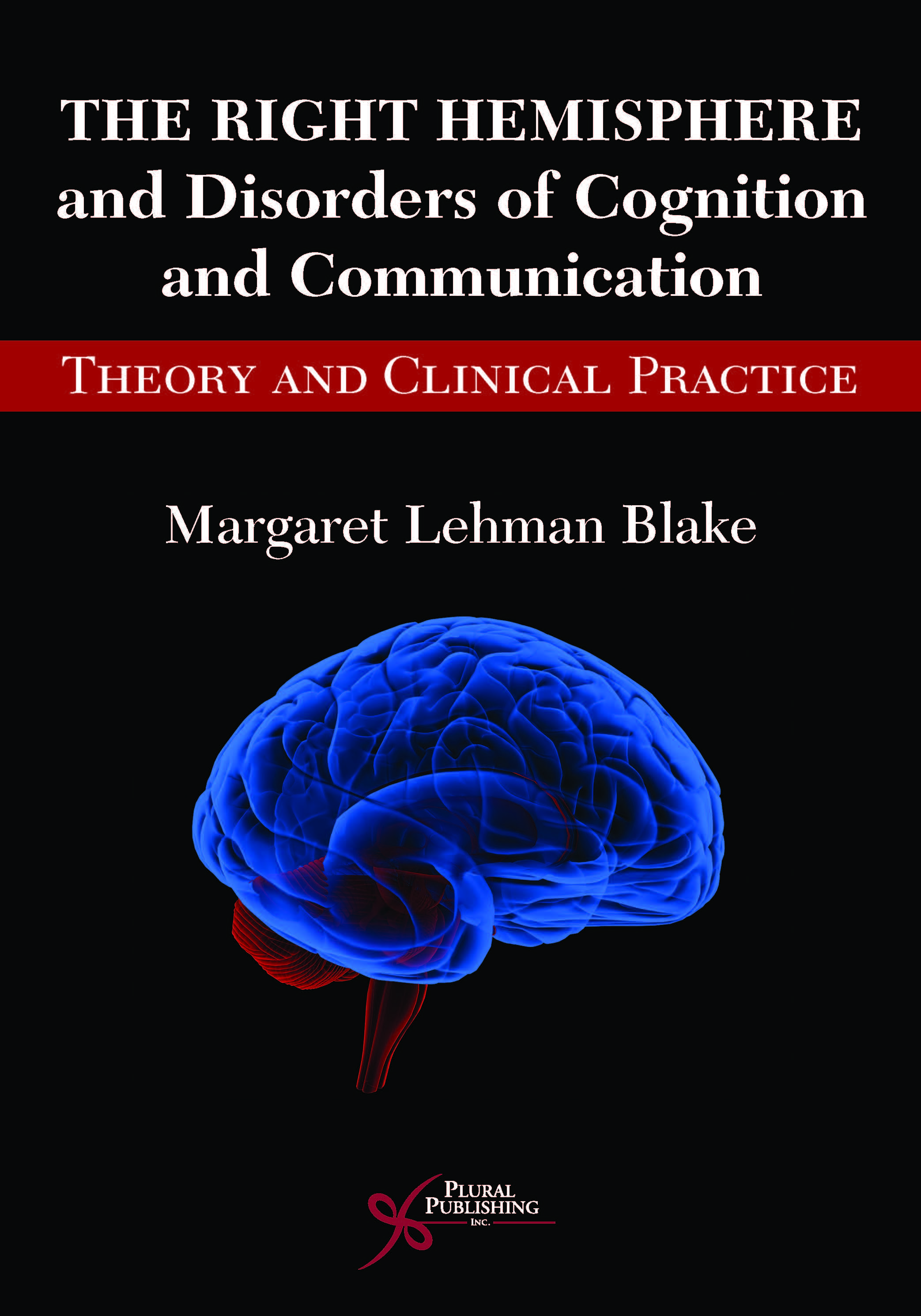
The Right Hemisphere and Disorders of Cognition and Communication: Theory and Clinical Practice
First Edition
Margaret Lehman Blake
Details: 301 pages, B&W, Softcover, 7" x 10"
ISBN13: 978-1-59756-962-0
© 2018 | Available
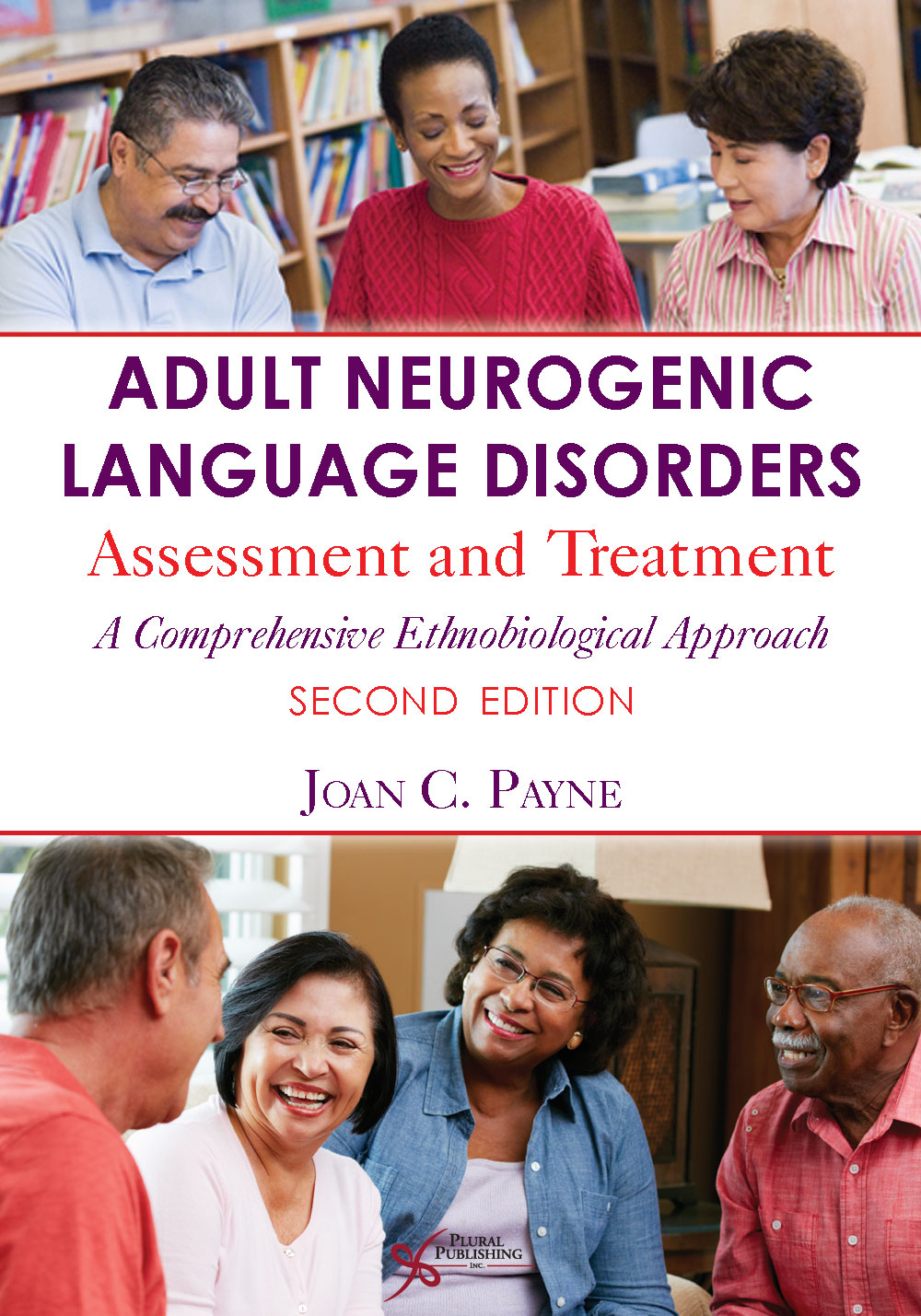
Adult Neurogenic Language Disorders: Assessment and Treatment. A Comprehensive Ethnobiological Approach
Second Edition
Joan C. Payne
Details: 392 pages, B&W, Softcover, 7" x 10"
ISBN13: 978-1-59756-503-5
© 2014 | Available
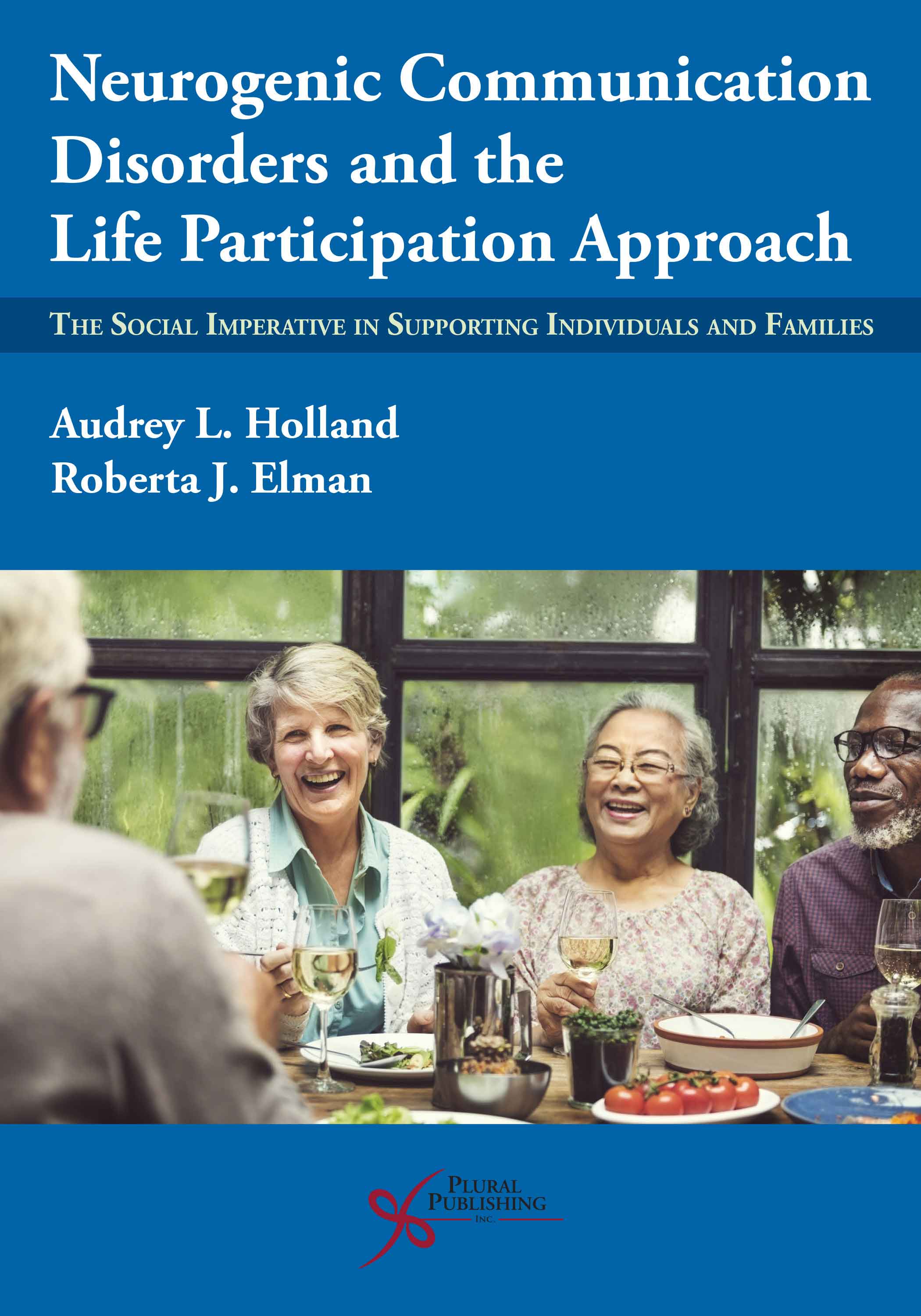
Neurogenic Communication Disorders and the Life Participation Approach: The Social Imperative in Supporting Individuals and Families
First Edition
Audrey L. Holland, Roberta J. Elman
Details: 242 pages, Softcover, B&W, 6" x 9"
ISBN13: 978-1-63550-295-4
© 2021 | Available
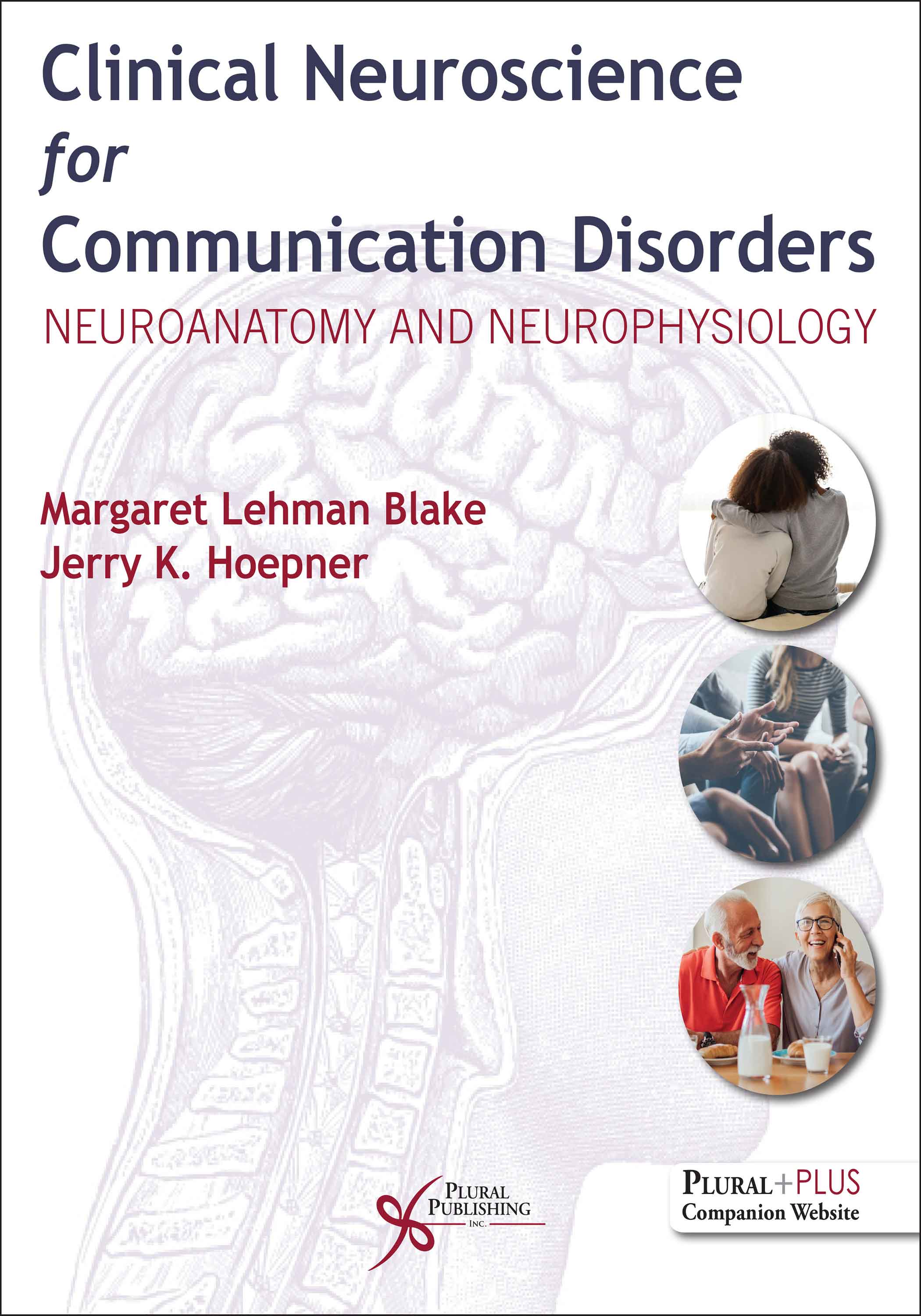
Clinical Neuroscience for Communication Disorders: Neuroanatomy and Neurophysiology.
First Edition
Margaret Lehman Blake, Jerry K. Hoepner
Details: 340 pages, Full Color, Hardcover, 8.5" x 11"
ISBN13: 978-1-63550-365-4
© 2023 | Available
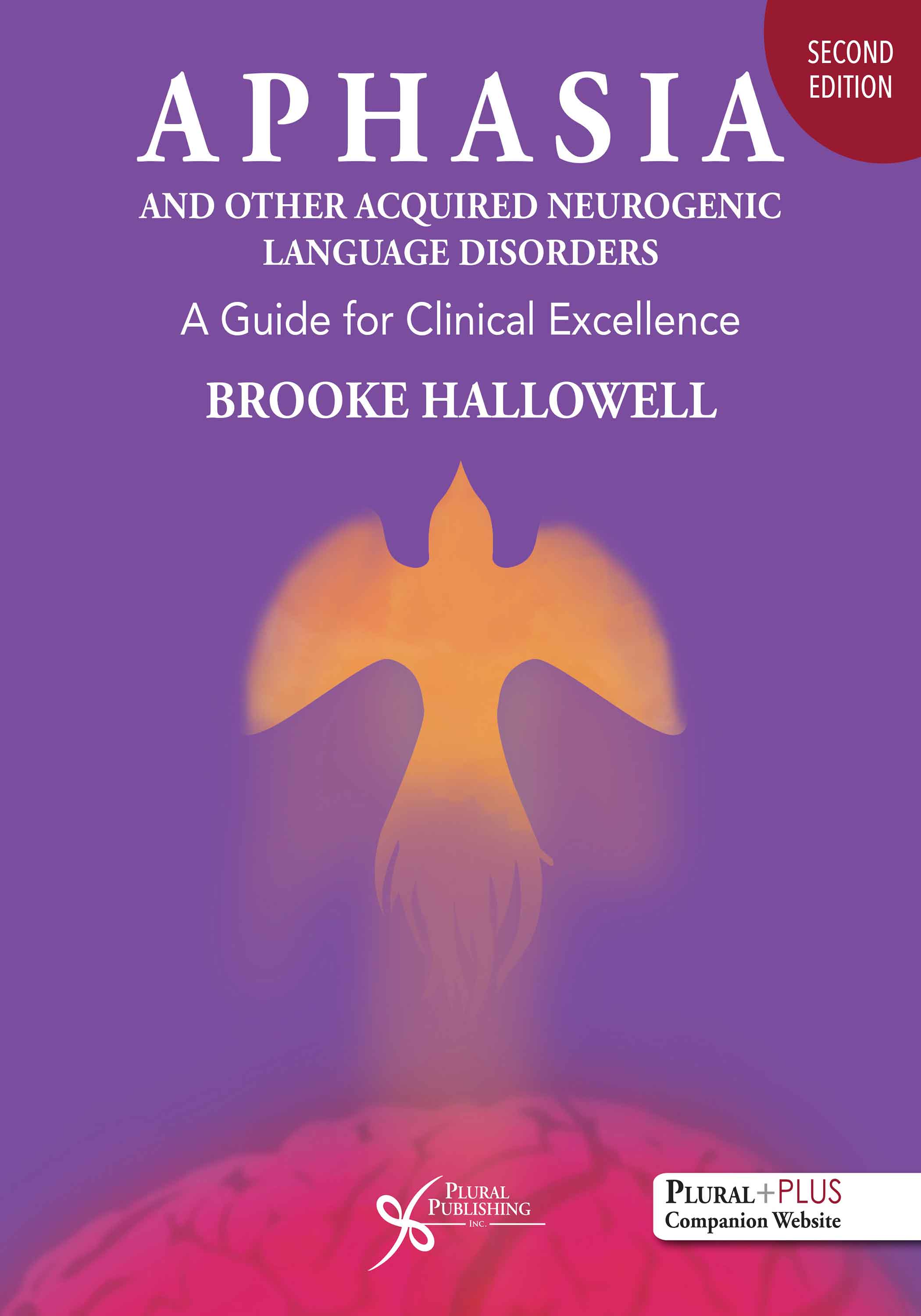
Aphasia and Other Acquired Neurogenic Language Disorders: A Guide for Clinical Excellence
Second Edition
Brooke Hallowell
Details: 629 pages, 2-Color with Full-Color Insert, Softcover, 8.5" x 11"
ISBN13: 978-1-63550-159-9
© 2023 | Available
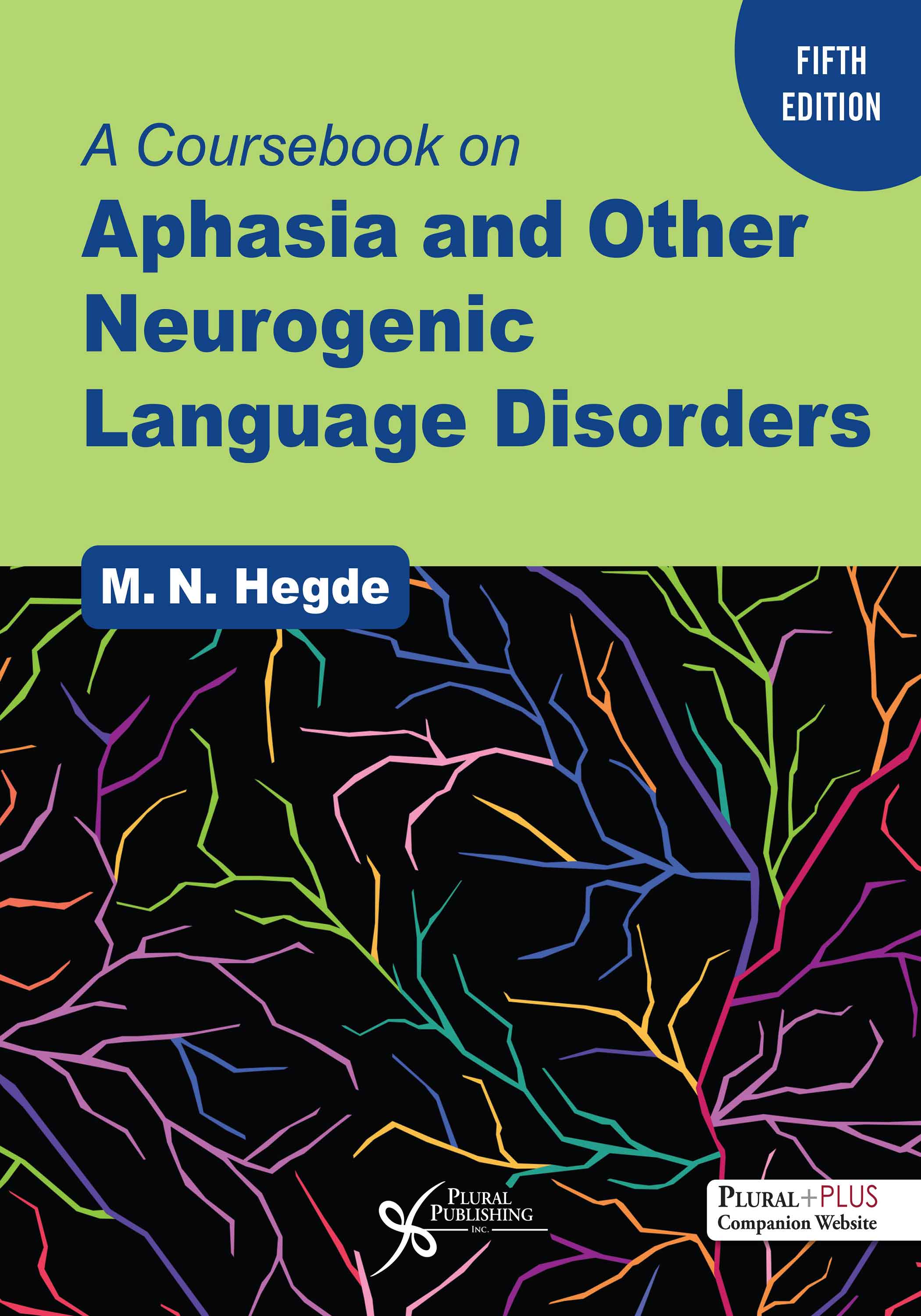
A Coursebook on Aphasia and Other Neurogenic Language Disorders
Fifth Edition
M.N. Hegde
Details: 426 pages, B&W, Spiral, 8.5" x 11"
ISBN13: 978-1-63550-422-4
© 2024 | Available
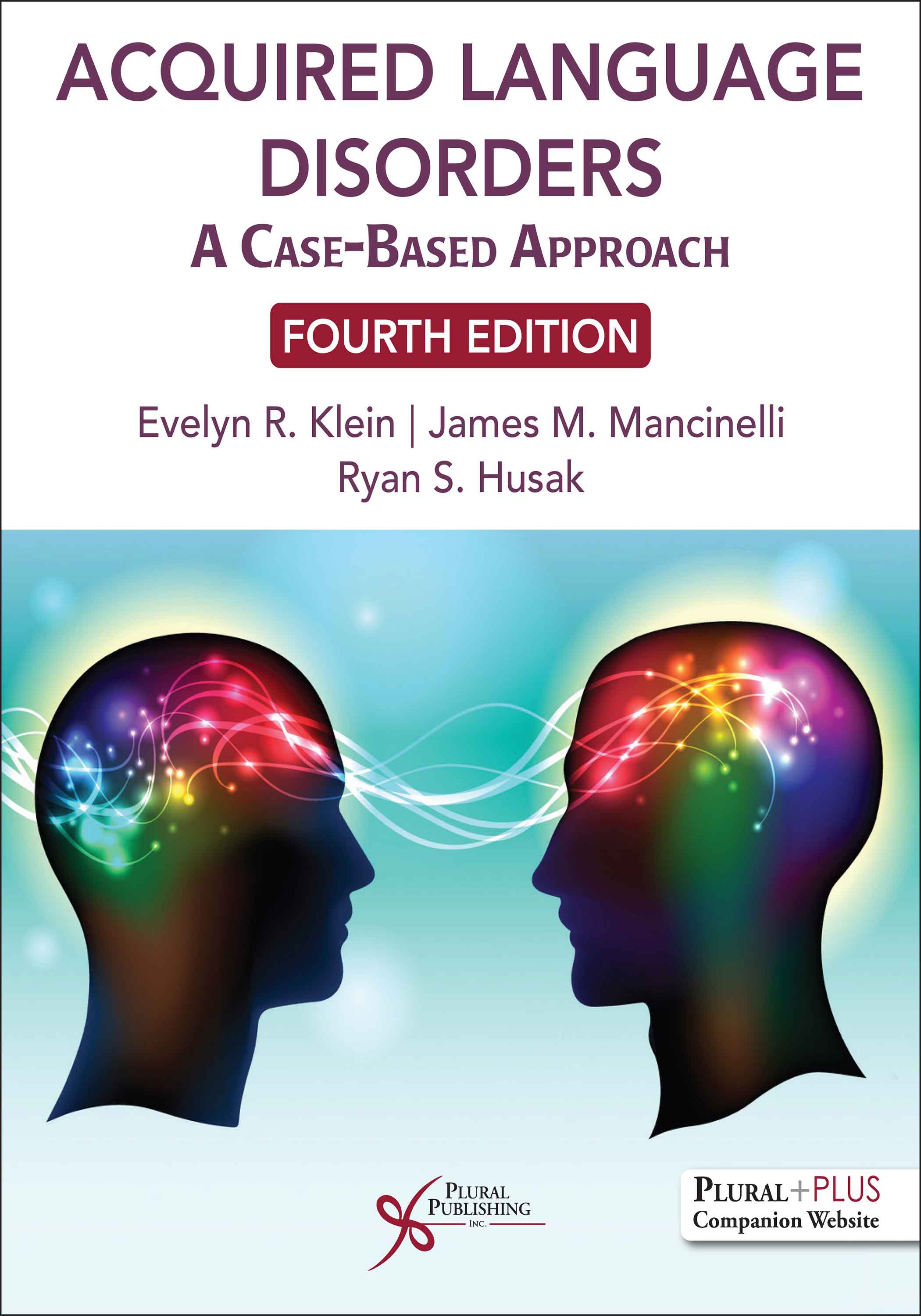
Acquired Language Disorders: A Case-Based Approach
Fourth Edition
Evelyn R. Klein, James M. Mancinelli, Ryan S. Husak
Details: 355 pages, B&W, Softcover, 8.5"x11"
ISBN13: 978-1-63550-700-3
© 2026 | Available
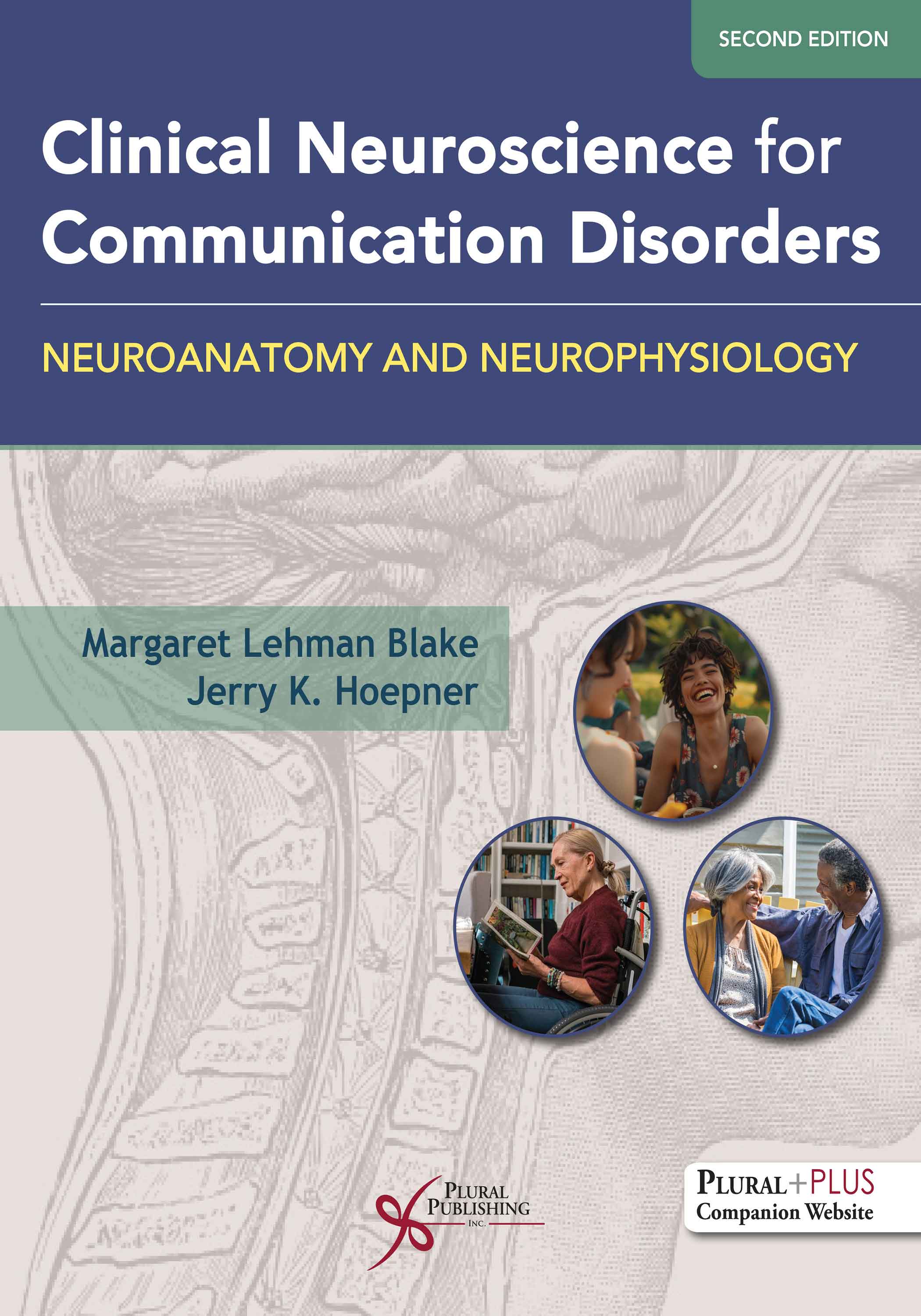
Clinical Neuroscience for Communication Disorders: Neuroanatomy and Neurophysiology
Second Edition
Margaret Lehman Blake, Jerry K. Hoepner
Details: 384 pages, Full Color, Hardcover, 8.5" x 11"
ISBN13: 978-1-63550-781-2
© 2027 | Available


